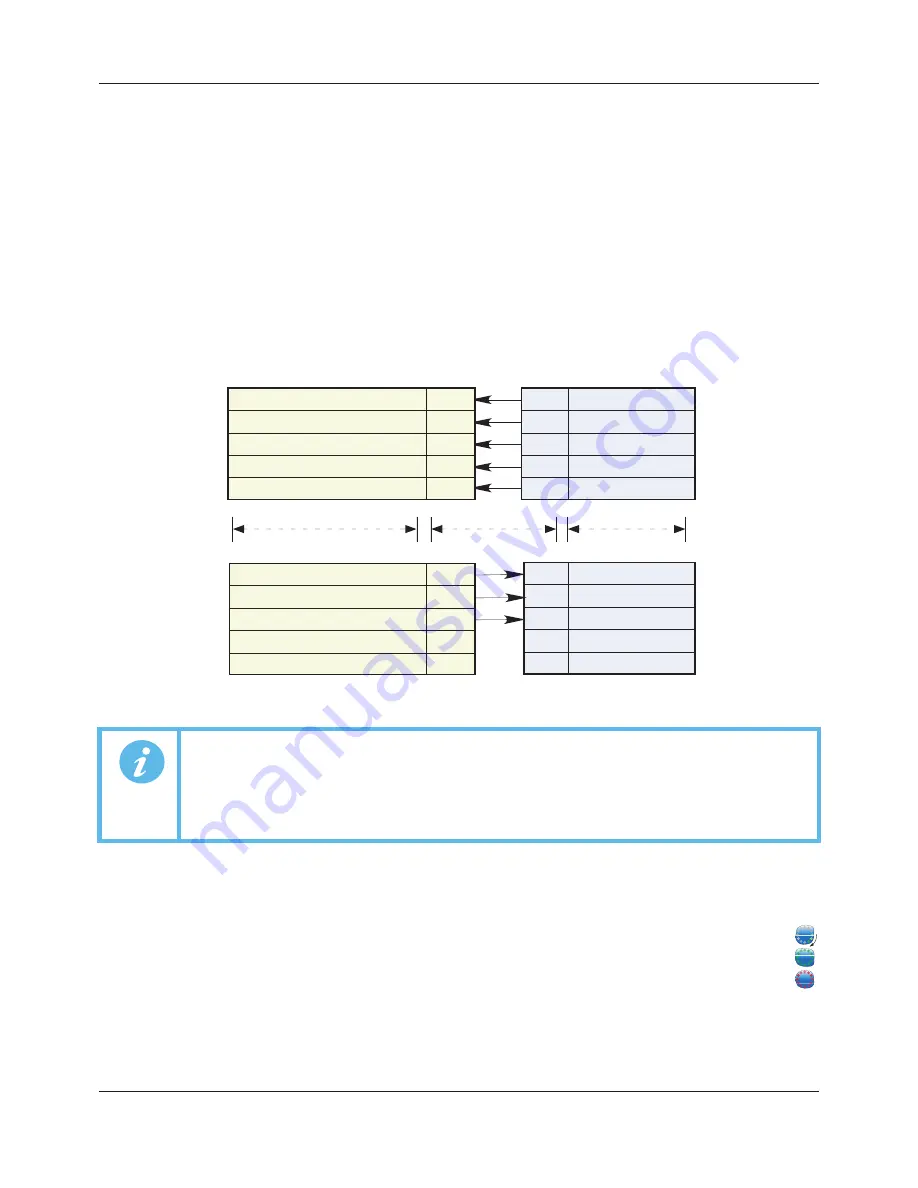
FEC920: USER GUIDE
Page 38
A
September 18
If the EtherNet/IP option has been ordered and enabled, the
FEC920
can be configured as either a client
(master) or a server (slave) (see Section 6.7). The client and server displays are identical except that the
configuration area of the client display is more extensive than that of the server display.
Figure 27, above shows a typical set of display pages for an EtherNet/IP client.
CONFIGURATION OF IMPLICIT INPUT/OUTPUT TABLES
Configuration of the input and output tables is carried out via iTools drag and drop only by:
a.
Entering the parameters to be read by the client into the server output table.
b
Entering the destination parameter into the equivalent location in the client input table.
c.
Entering the parameters to be written by the client into the client output table.
d
Entering the destination parameter into the equivalent location in the server input table.
The example in Figure 28 shows this (using the
FEC920
as the client) in graphical form, using just a few
parameters (there can be up to 50 in each table).
Figure 28 Input/Output table entries
CONNECTION STATUS INDICATOR
A circular status indicator appears in a number of the EtherNet/IP display pages. This indicator can indicate the
following states:
Green rotating ‘flash’: the instrument is on line and at least one CIP connection is established.
Green flashing circle: the instrument is on line but no CIP connections have been established.
Red flashing circle: there is a break in the physical connection between the client and the server, or the
remote unit is switched off or is initialising.
Note:
1. Channel values from the Server can be ‘wired’ into
FEC920
Virtual channel inputs (as
shown above) so that they can be traced and/or recorded. In such cases the virtual
channel ‘Operation’ must be set to ‘Copy’ (see Section 6.5.1).
Note:
2. Inputs and outputs would normally be given suitable descriptors (e.g. ‘Reset timer’ instead
of ‘Channel.1.Alarm1’).
Client (
FEC920
) input table
Server output table
Client (
FEC920
) output table
Server input table
User Values.1.Value
Channel.1.Alarm1
I/P1
I/P2
I/P3
I/P4
etc.
O/P1
O/P2
O/P3
O/P4
etc.
Out Parameter 1
Out Parameter 2
Out Parameter 3
Out Parameter 4
O/P1
O/P2
etc.
I/P1
I/P2
etc.
In Parameter 1
In Parameter 2
Input Data
Destination
The implicit data
value coming in
from the EtherNet/
IP device will be
copied to this wired
parameter
Output Data
Source
The value coming in
from this wire will be
sent to the EtherNet/
IP device.
Virtual Channel.1.Main.Input1
Virtual Channel.2.Main.Input1
Virtual Channel.3.Main.Input1
Virtual Channel.4.Main.Input1
Output Data
Source
The value coming in
from this wire will be
sent to the EtherNet/
IP device.
Values
Wired parameters
Wired parameters
Input Data
Destination
The implicit data
value coming in
from the EtherNet/
IP device will be
copied to this wired
parameter
A5E45696052A Rev-AA
















































